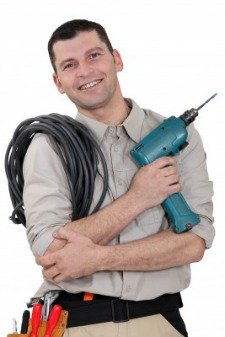Wireless Outdoor Cameras – Use Them to Protect Your Property

One of
the first lines of defense against any intruders to your property is wireless
outdoor cameras, also called CCTV cameras.
There is a reason you see such cameras installed inside and outside of banks, jewelry stores, museums and government buildings. Simply put, they are a great deterrent against most burglars, who prefer to not be caught on tape.
In the
past, both camera technology and CCTV setups were very expensive to buy and
install, but this has drastically changed in recent years. Cameras, even night
vision enables ones, have become affordable and the recording systems have
become very simple to set up.
On this page you will find all the information you need to get started with planning and setting up your own wireless outdoor cameras, without the need for expert help.
DYI Installation

As long
as you have some basic DYI skills and know how to use a drill, screwdrivers and
have some very basic computer skills, you will be able to take care of such a
project on your own; no need to hire an expensive security expert.
The
first thing you need to consider is how many cameras you will need. You can of
course cover your entire property from every angle, but this will cost you a
lot more money and time to set up.
At the very least you should have a camera installed that covers the entrances to your home, so you will probably need at least one or two cameras.
Check for Water Resistant
When
choosing wireless outdoor cameras you have to make sure that the one you go for
is water resistant. You can quickly make the mistake of accidentally buying an
indoor camera that is not weather proof, making very unsuitable.
Another feature to consider is night vision,
as a lot of burglars operate under the darkness of night. With night vision you
do not need to have a bright security light, it simply uses infrared light, not
detectable by the human eye.
The size of the camera is usually not so important, unless you want the cameras to be hidden. For most people though, wireless outdoor cameras are about creating a deterrent, so you do want to advertise that there are cameras in place.
Computer Interface

What is
important though is how the cameras interact with a computer interface or
central recording unit. This should be very user friendly and not require any
programming skills. At the same time you do not want the features to be too
basic, as this could limit what you can achieve.
At the
very least you should be able to log into the computer software and look over
any recordings made. Cameras can either be set to constant recording or else be
motion activated; your choice will obviously result in different amounts of
recording.
Being able to go over a day’s recordings should be very easy to do, and the recording should have time stamps on them as well, as this helps identify times and dates of each recording.
Login from Your Smart Phone
With
more advanced features you can also log into the camera system remotely over
the internet, even over a smart phone. These systems usually send out an email
alert as well, so if movement is detected and you are not at home, you can
quickly log in and see in real time what is going on.
Simple DYI skills are all that are required, only your budget will dictate how many cameras you have and how many features the software includes. With just a little bit of planning you can get your own CCTV system up and running in no time, and the great thing is that it is expandable at any time.
Related Articles to Home Security Cameras
Home Video Security Systems – A Nice Addition to a Security System
Wireless Outdoor Cameras – Use Them to Protect Your Property
The Benefits of Home Security Surveillance
We Hope Our Website Is Helpful to You
Would you like to know how we are building this website?
Have you ever thought about building your own website and making some money from it?
Would you like to learn more?
Check this out! Work From Home
Please Stay Safe!

We Care!
